Published
- 13 min read
Best Render Alternatives in 2025 for Developers and Teams
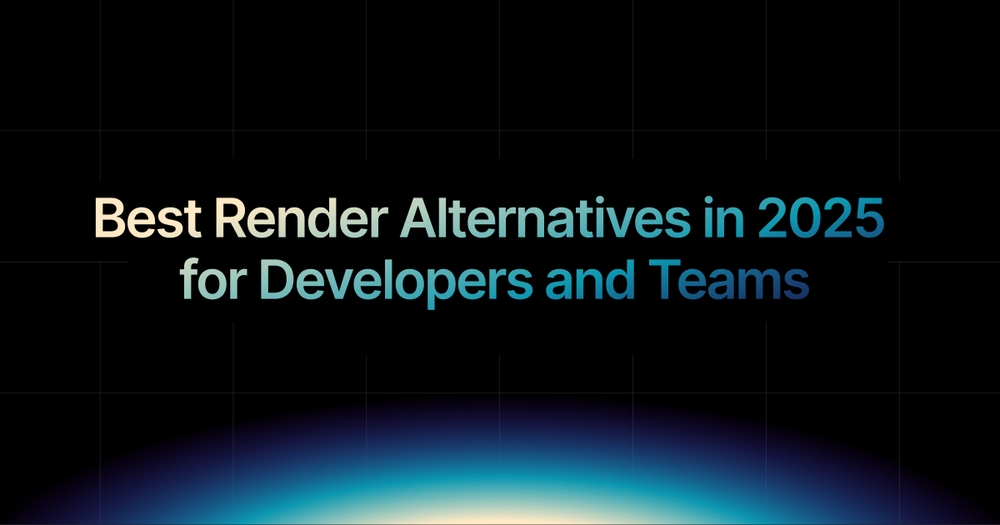
Introduction
Render has earned its place as a reliable platform for developers who want fast and simple full-stack deployments. It combines Git-based automation, built-in databases, and easy SSL configuration, making it appealing for small teams and startups that want to move quickly without managing infrastructure.
However, as projects grow, Render’s simplicity can start to limit flexibility. Developers often need deeper control over infrastructure, better automation, cost visibility, and stronger performance for production workloads. These growing needs have driven the demand for Render alternatives that combine ease of use with scalability and intelligent cost management.
In this article, we explore the best Render alternatives in 2025 for developers, startups, and growing teams. Among them, Kuberns stands out as a smarter, AI-powered deployment platform that automates everything from scaling to optimisation while delivering full-stack flexibility.
1. Kuberns: The Smarter, AI-Powered Alternative to Render
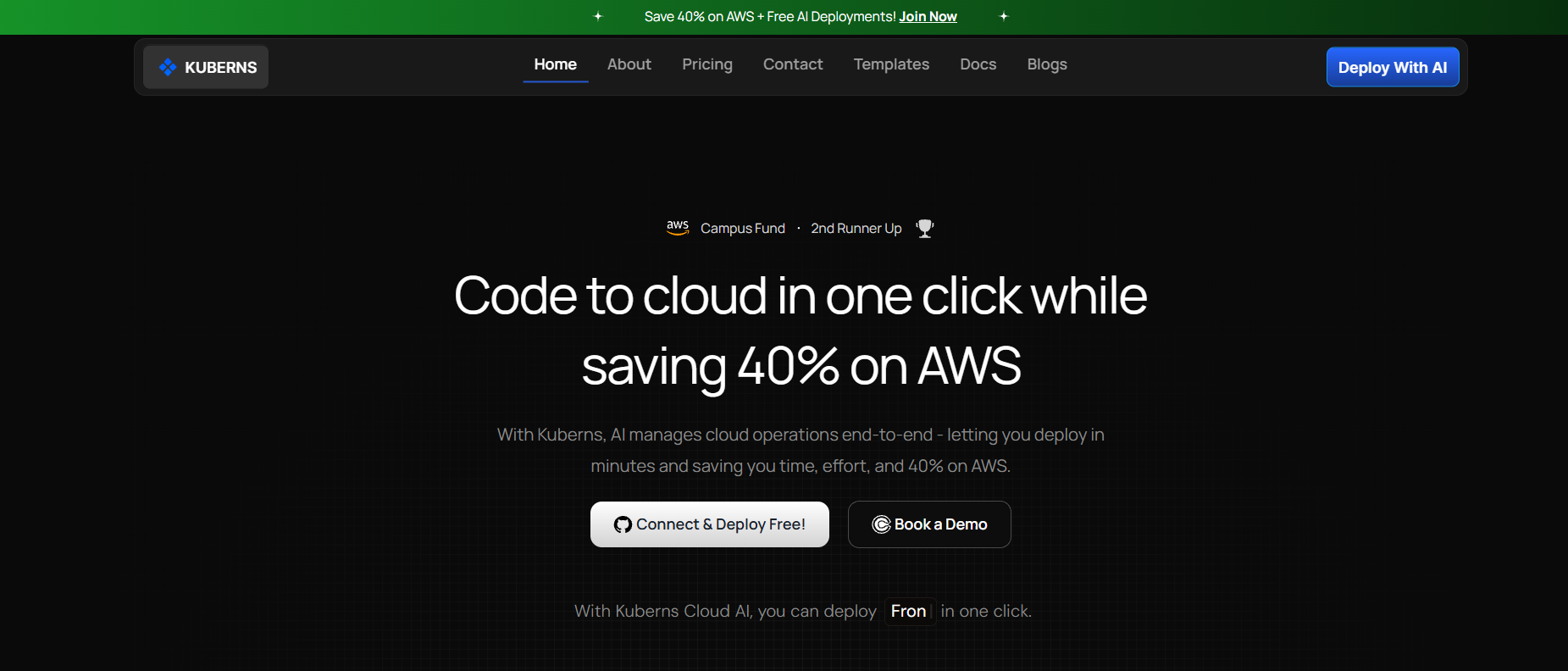 Kuberns redefines how developers deploy and manage applications. It combines the simplicity of Render with the performance and reliability of AWS infrastructure. With built-in AI automation, Kuberns handles provisioning, scaling, monitoring, and cost optimization automatically, so teams can focus on building instead of maintaining servers.
Kuberns redefines how developers deploy and manage applications. It combines the simplicity of Render with the performance and reliability of AWS infrastructure. With built-in AI automation, Kuberns handles provisioning, scaling, monitoring, and cost optimization automatically, so teams can focus on building instead of maintaining servers.
Why Developers Prefer Kuberns
- Full-stack support: Deploy web apps, APIs, and containers directly from GitHub or GitLab in one click.
- AI-driven scaling: Automatically adjusts infrastructure resources based on real-time traffic and performance metrics.
- Up to 40% AWS savings: Kuberns optimizes infrastructure costs intelligently. Read more in Cut AWS Bills by 40% Without Compromising on Security or Features.
- Zero DevOps setup: No need to manage EC2, load balancers, or Kubernetes clusters manually.
- Real-time monitoring and logs: Stay informed with live dashboards and instant alerts.
Kuberns is built for developers who want cloud performance without DevOps complexity. It provides the control and scalability of AWS with the simplicity of a one-click platform.
Learn more about how it works in What Is Kuberns: The Simplest Way to Build, Deploy, and Scale Full-Stack Apps.
2. Vercel
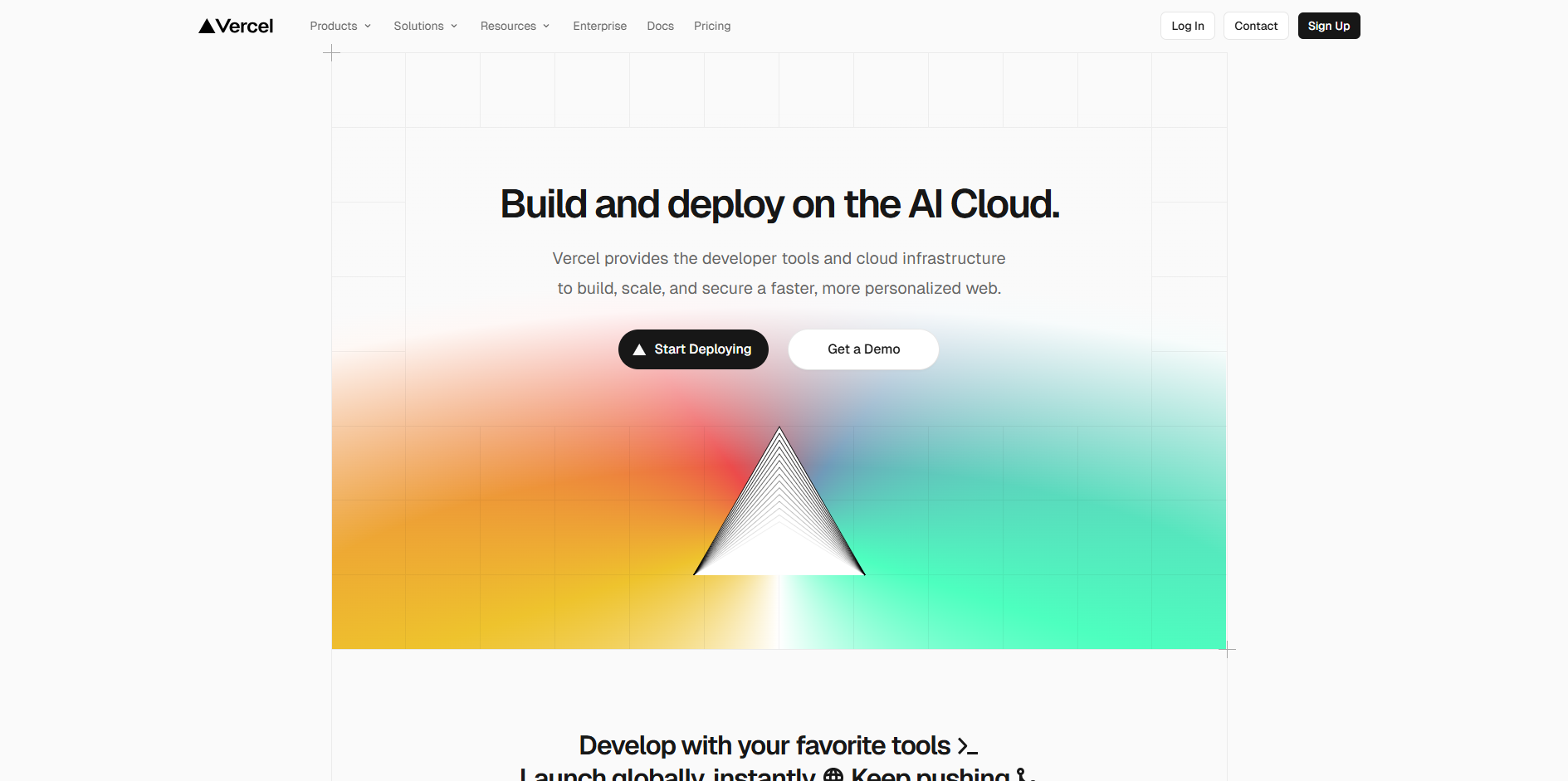 Vercel is a popular choice for developers building frontend frameworks like Next.js, React, and Vue. It focuses on seamless builds and fast global CDN delivery, allowing teams to push updates instantly.
Vercel is a popular choice for developers building frontend frameworks like Next.js, React, and Vue. It focuses on seamless builds and fast global CDN delivery, allowing teams to push updates instantly.
Best For
Frontend-focused projects and teams that need quick deployments with minimal setup.
Limitations
Vercel is ideal for static or serverless projects, but its backend capabilities are limited. Developers who need full-stack control or containerized workloads often move to alternatives like Kuberns for better flexibility and automation.
Read Vercel vs Kuberns: Which Platform Fits Your Development Needs Better for a detailed comparison.
3. Netlify
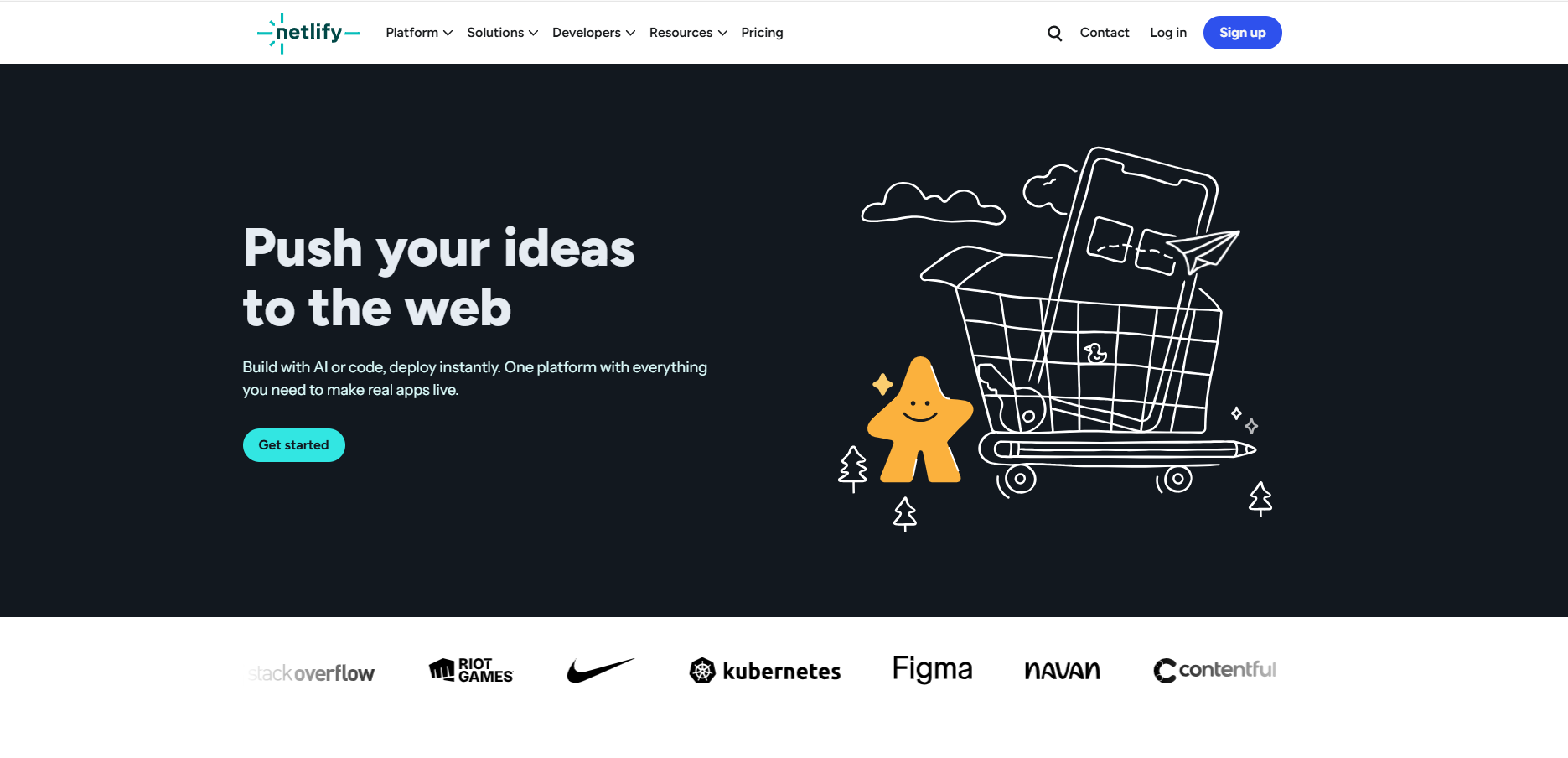 Netlify simplifies frontend and JAMstack deployments with automated Git-based builds, serverless functions, and global edge hosting. It is widely used by web developers who prefer fast builds and simple configurations.
Netlify simplifies frontend and JAMstack deployments with automated Git-based builds, serverless functions, and global edge hosting. It is widely used by web developers who prefer fast builds and simple configurations.
Best For
Static websites, portfolios, blogs, and landing pages that need rapid deployment.
Limitations
Netlify works well for static or lightweight applications but struggles with backend-heavy or database-driven workloads.
If you are looking for a more powerful platform with backend support, check Best Netlify Alternatives in 2025 for options that include automation and scalability.
4. DigitalOcean App Platform
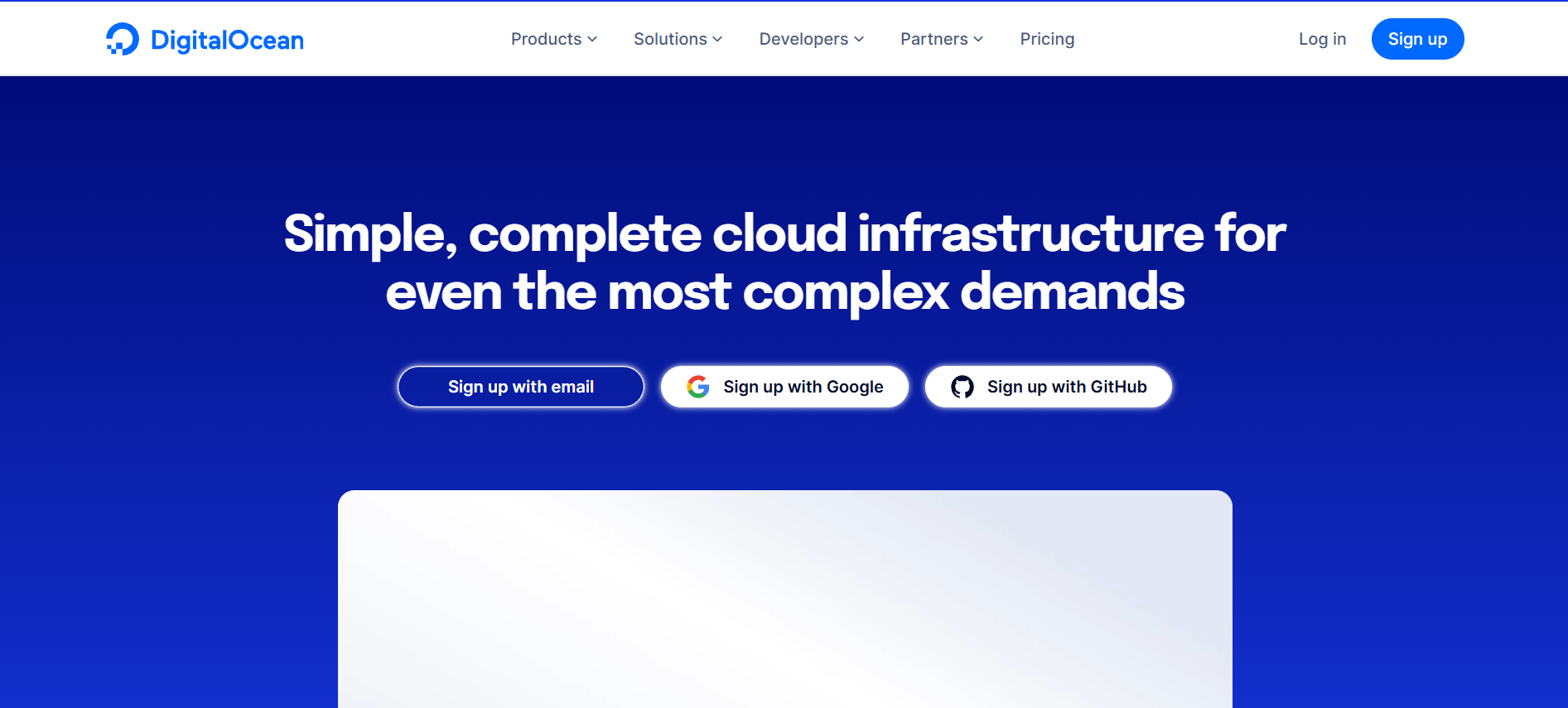 DigitalOcean App Platform provides a user-friendly way to host web apps, APIs, and containerized services. It automates deployment directly from Git and offers transparent, flat-rate pricing.
DigitalOcean App Platform provides a user-friendly way to host web apps, APIs, and containerized services. It automates deployment directly from Git and offers transparent, flat-rate pricing.
Best For
Startups and freelancers who need predictable pricing and a simple setup.
Limitations
While convenient, it lacks advanced automation and deep infrastructure visibility. As workloads scale, performance tuning and optimization may require manual adjustments.
Explore Best DigitalOcean Alternatives for Startups and Solo Developers for platforms with stronger automation and cost efficiency.
5. Heroku
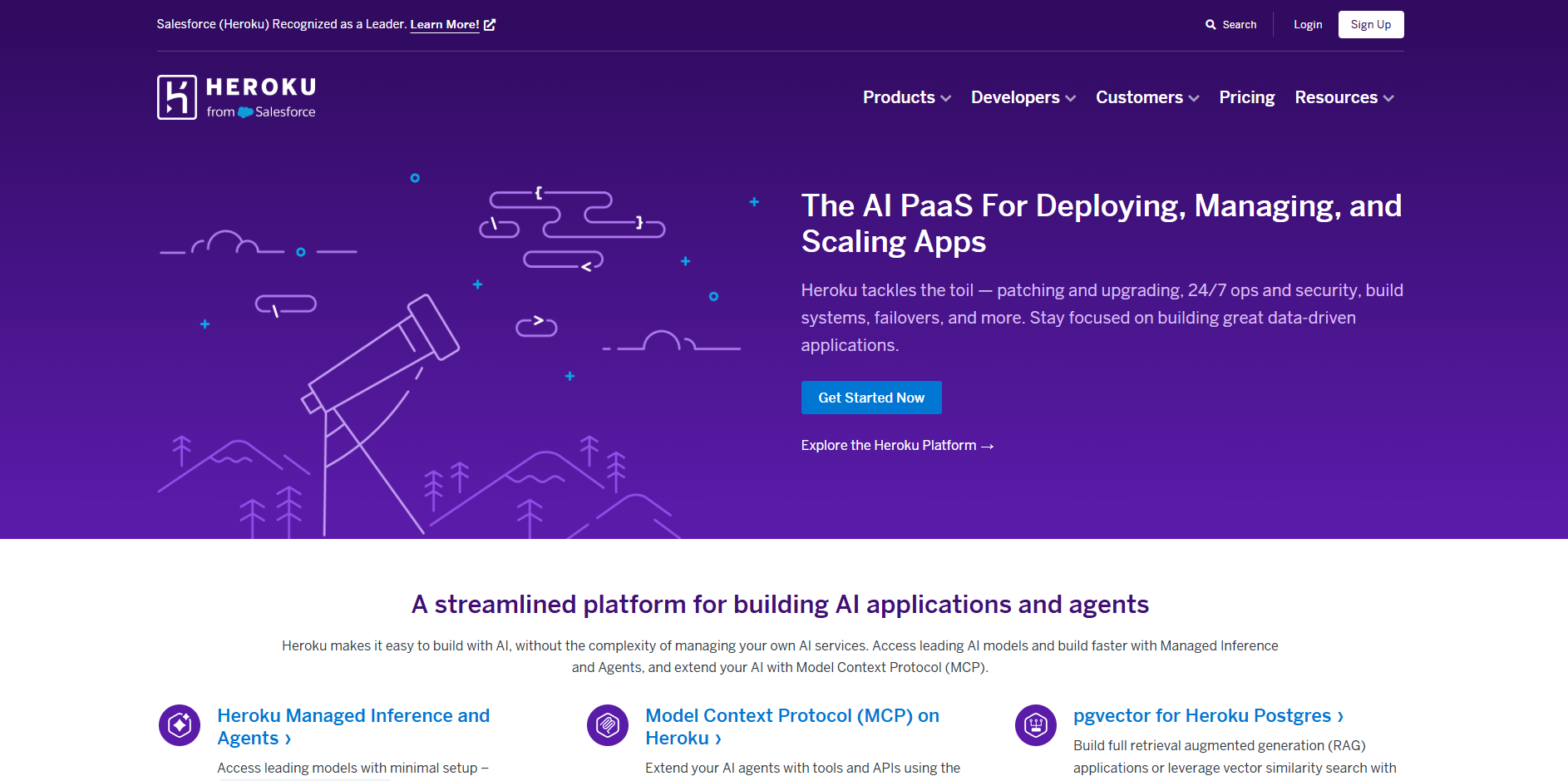 Heroku has long been one of the easiest platforms for deploying web applications. It supports popular languages like Python, Node.js, and Ruby, and offers a simple Git push workflow.
Heroku has long been one of the easiest platforms for deploying web applications. It supports popular languages like Python, Node.js, and Ruby, and offers a simple Git push workflow.
Best For
Small to mid-sized projects and developers who prioritize ease of use over infrastructure control.
Limitations
Heroku’s pricing can become expensive as traffic grows, and its add-on ecosystem can add to the overall cost. Many teams now prefer more affordable and flexible options like Kuberns.
Learn more in Top Heroku Competitors to Consider in 2025.
6. AWS Amplify
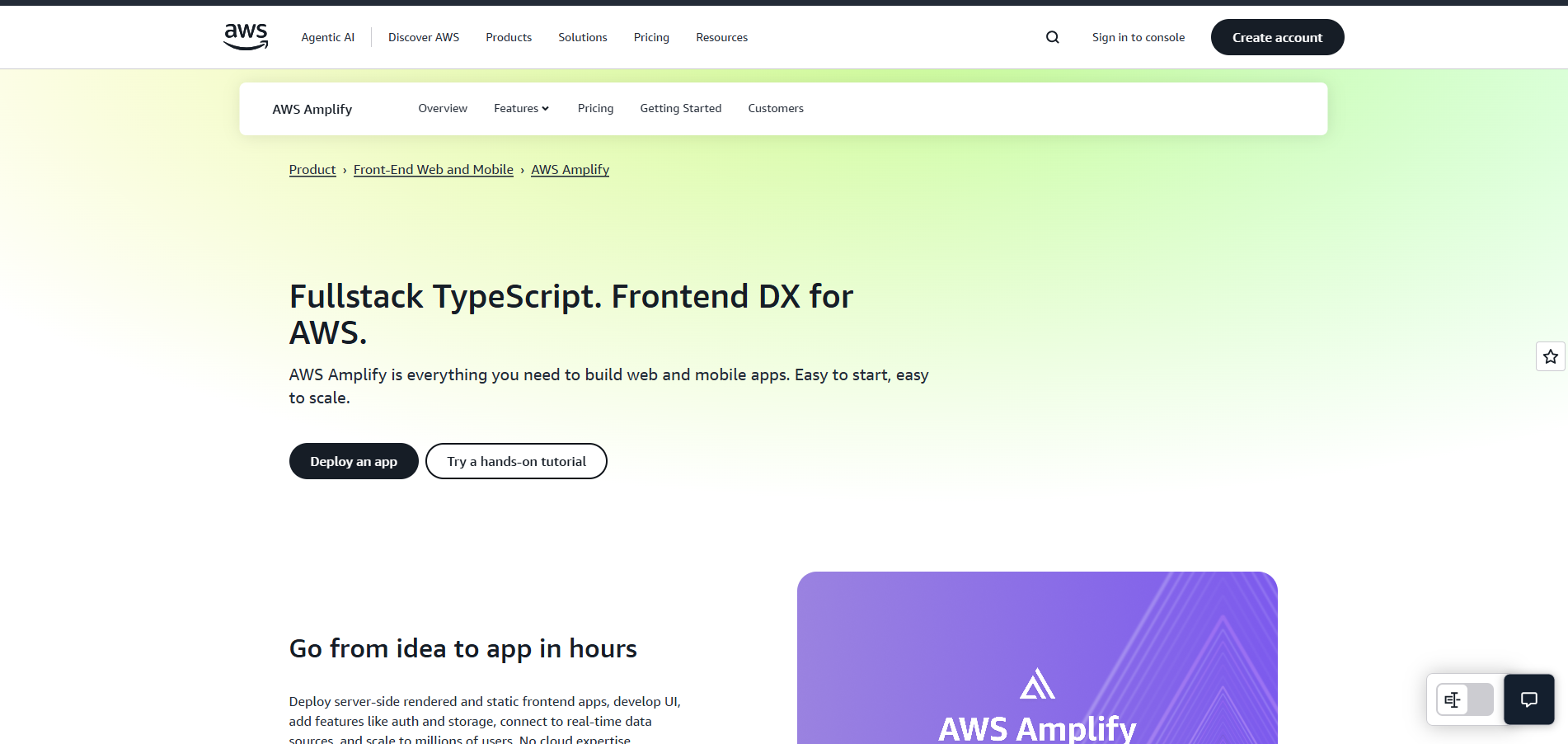 AWS Amplify is a cloud framework designed for developers building full-stack and mobile applications. It offers hosting, APIs, authentication, and storage built on top of AWS.
AWS Amplify is a cloud framework designed for developers building full-stack and mobile applications. It offers hosting, APIs, authentication, and storage built on top of AWS.
Best For
Developers who already use AWS and want to integrate hosting with backend services like DynamoDB or Lambda.
Limitations
Amplify offers deep control but requires manual setup of IAM roles, scaling policies, and configurations. For teams that want AWS reliability with automation, Kuberns is a simpler, faster alternative.
Read How to Reduce AWS Cost to learn how to optimize cloud spending effectively.
When to Move Beyond Render
Render is ideal for developers who want an all-in-one platform, but as your projects grow, it can become restrictive. You might consider switching if:
- Your application needs multi-region deployments or enterprise-level uptime.
- You want automation and scaling without manual configuration.
- Your infrastructure costs are unpredictable or increasing rapidly.
- You require custom DevOps workflows, APIs, or databases.
In such cases, Kuberns offers a smoother path forward with complete automation, AWS-grade reliability, and advanced cost optimization.
How to Choose the Right Render Alternative
Selecting the right alternative depends on your project goals, technical needs, and team size.
- Define your workload
- Static sites, APIs, or containerized apps require different scaling strategies.
- Compare pricing models
- Choose between predictable monthly plans or usage-based billing.
- Evaluate automation
- Check if the platform automates deployment, monitoring, and scaling.
- Look for integrated monitoring
- A unified dashboard with logs, alerts, and analytics simplifies maintenance.
- Test before committing
- Run small prototypes to measure real performance and cost.
For a complete selection framework, read How to Pick the Best IaaS Platform for Your Business Needs in 2025.
Why Kuberns Is the Right Choice
If you are looking for a platform that simplifies deployment without limiting scalability, Kuberns is built for exactly that. It combines the reliability of AWS with the power of automation, giving developers a full-stack platform that eliminates DevOps friction.
Built for Modern Workloads
Kuberns supports any application type, from static websites to full-stack microservices. Developers can deploy directly from Git in one click, and the platform automatically manages scaling, monitoring, and infrastructure optimization in the background.
Smarter Automation and Cost Control
With AI-powered automation, Kuberns intelligently provisions resources and reduces idle costs. Teams save up to 40% on AWS bills while maintaining high performance and global uptime. You can learn more about this in Cut AWS Bills by 40% Without Compromising on Security or Features.
End-to-End Visibility
Unlike Render or similar platforms, Kuberns offers unified observability, real-time logs, and alerts built directly into the dashboard. This means you can monitor performance, detect issues, and scale confidently without third-party tools.
Built on AWS Infrastructure
Kuberns runs entirely on AWS, ensuring enterprise-grade reliability, global reach, and security compliance. It gives you the performance of AWS with the simplicity of a managed platform.
In short, Kuberns delivers what most Render users eventually look for — a powerful, fully automated cloud platform that helps teams deploy faster, scale smarter, and spend less.
For a complete overview, visit What Is Kuberns: The Simplest Way to Build, Deploy, and Scale Full-Stack Apps.
Why Kuberns Is the Right Choice
If you are looking for a platform that simplifies deployment without limiting scalability, Kuberns is built for exactly that. It combines the reliability of AWS with the power of automation, giving developers a full-stack platform that eliminates DevOps friction.
- Built for Modern Workloads: Kuberns supports any application type, from static websites to full-stack microservices. Developers can deploy directly from Git in one click, and the platform automatically manages scaling, monitoring, and infrastructure optimization in the background.
- Smarter Automation and Cost Control: With AI-powered automation, Kuberns intelligently provisions resources and reduces idle costs. Teams save up to 40% on AWS bills while maintaining high performance and global uptime. You can learn more about this in Cut AWS Bills by 40% Without Compromising on Security or Features.
- End-to-End Visibility: Unlike Render or similar platforms, Kuberns offers unified observability, real-time logs, and alerts built directly into the dashboard. This means you can monitor performance, detect issues, and scale confidently without third-party tools.
- Built on AWS Infrastructure: Kuberns runs entirely on AWS, ensuring enterprise-grade reliability, global reach, and security compliance. It gives you the performance of AWS with the simplicity of a managed platform.
In short, Kuberns delivers what most Render users eventually look for, A powerful, fully automated cloud platform that helps teams deploy faster, scale smarter, and spend less.
For a complete overview, visit What Is Kuberns: The Simplest Way to Build, Deploy, and Scale Full-Stack Apps.
Final Thoughts
Render remains a reliable choice for developers who value simplicity, but for growing teams that need automation, scalability, and predictable costs, it often falls short.
Kuberns fills this gap with an AI-powered, AWS-backed platform that automates scaling, monitoring, and optimization in one place. It allows teams to deploy faster, scale smarter, and save more all without the burden of DevOps complexity.
If you’re ready to simplify your cloud management and take full control of your deployments,
visit Kuberns.com and start your journey toward automated, cost-efficient cloud hosting.
Frequently Asked Questions (FAQ)
1. What are the best alternatives to Render in 2025?
Some of the best Render alternatives in 2025 include Kuberns, Netlify, Vercel, Fly.io, DigitalOcean App Platform, and AWS Amplify. Each caters to different workloads, but Kuberns stands out for its AI-powered automation and cost optimization on AWS infrastructure. You can read a detailed comparison in Render vs Kuberns.
2. Why should I move away from Render?
Render is great for simplicity, but it can become limiting as projects scale. Developers often move away from Render when they need more control over infrastructure, deeper backend support, or predictable cloud costs. Platforms like Kuberns offer these benefits with built-in monitoring, scaling, and automation.
3. Is Kuberns cheaper than Render?
Yes. Kuberns helps teams reduce AWS costs by up to 40% through intelligent workload optimization. Since Kuberns runs on its own AWS infrastructure, you get enterprise-grade performance without overpaying for underused resources. Learn more in Cut AWS Bills by 40% Without Compromising on Security or Features.
4. Does Kuberns support backend APIs and databases?
Absolutely. Unlike some frontend-focused platforms, Kuberns supports full-stack applications, including backend APIs, databases, and microservices. You can deploy containerized workloads effortlessly while maintaining full visibility and control.
5. How is Kuberns different from platforms like Netlify or Vercel?
While Netlify and Vercel excel at frontend hosting, Kuberns focuses on end-to-end deployment automation for full-stack applications. It provides built-in scaling, cost optimization, and observability. Explore detailed comparisons in:
6. Can I migrate from Render to Kuberns easily?
Yes, Kuberns makes migration simple. You can connect your Git repository, select your runtime, and deploy instantly. The platform automatically configures your services, scaling, and monitoring, eliminating the need for manual setup.
7. Who should use Kuberns instead of Render?
Kuberns is ideal for developers, startups, and growing teams that want the simplicity of Render combined with the power of AWS automation. If you manage multiple services, APIs, or microservices, Kuberns ensures faster deployments and lower costs without the complexity of DevOps.